 Wackenroder, Wilhelm Heinrich (1773–98): Boyhood friend of Ludwig Tieck in Berlin, with whom he studied in Erlangen and published the Herzensergiessungen eines kunstliebenden Klosterbruders (1797) with its extensive essays on art and music emphasizing a more empathetic, religiously oriented, and less analytical appreciation of art, views the two friends cultivated also during visits to Bamberg and Nürnberg and inspired in part by the work of Albrecht Dürer. (Portrait: relief by Friedrich Tieck, brother of Ludwig Tieck.)
Wackenroder, Wilhelm Heinrich (1773–98): Boyhood friend of Ludwig Tieck in Berlin, with whom he studied in Erlangen and published the Herzensergiessungen eines kunstliebenden Klosterbruders (1797) with its extensive essays on art and music emphasizing a more empathetic, religiously oriented, and less analytical appreciation of art, views the two friends cultivated also during visits to Bamberg and Nürnberg and inspired in part by the work of Albrecht Dürer. (Portrait: relief by Friedrich Tieck, brother of Ludwig Tieck.)
Wagner, Christian Johann Baptist von (24 June 1754–13 December 1833): Native of Würzburg, where he studied law. Entered public service and eventually became the senior chancellor of the last two prince bishops of Würzburg, Franz Ludwig von Erthal and Georg Karl von Fechenbach; second trustee of the university in Würzburg; thereafter Würzburg and later royal Bavarian state counselor, from 1806 president of highest judiciary, and, during the final Bavarian period, of the territorial judiciary as well. The Schellings’ neighbor in Würzburg. Although Wagner long remained unmarried allegedly because of his work circumstances, when he was fifty years old, after Würzburg had passed to Bavaria in 1803 and he did not believe any further territorial changes would be forthcoming, on 7 February 1804 he married fifteen-year-old Jeanette, née Nally, a purported Würzburg beauty, though the marriage, not surprisingly, was not a happy one (Thomas Henner, “Autobiographie des Staatsrats Chrsitian Johann Baptist von Wagner,” Archiv des Historischen Vereins von Unterfranken und Aschaffenburg 47 [1903], 1–124, here: 80, 98), though it did nonetheless last 29 years.
Wagner, Jeanette, née Nally (1789–after 1833): From 7 February 1804 wife of Christian Johann Baptist von Wagner in Würzburg. Described as a “beauty of the first order” (Archiv des Historischen Vereins von Unterfranken und Aschaffenburg 47 [1905], 98).
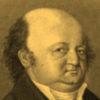 Wagner, Johann Jakob (21 January 1775–22 November 1841): Professor of philosophy in Würzburg. 1795–96 studied law in Jena, , then 1796–97 in Göttingen, becoming acquainted with Christian Gottlob Heyne, whose philological seminars he attended, and also studying philosophy, earning his doctorate in philosophy in 1797 and becoming acquainted with Fichte in the autumn of 1797 during a trip to Jena (Fichte initially sought to engage him as tutor to his two-year-old son but then thought better of the idea). From 1798 to 1801 secretary to a merchant and editor for a business periodical in Nürnberg, later private house tutor in Salzburg (from November 1801), where he also married and began working with the Salzburger Literatur-Zeitung, and Munich, also lecturing privately. From 1803 professor of philosophy in Würzburg, from 1809 lecturer in Heidelberg after Würzburg was ceded to the Grand Duke of Tuscany, from 1815 back in Würzburg after Würzburg passed back to Bavaria. Retired in 1834, perhaps for ecclesiastical-political reasons. Initially a follower of Schelling”s philosophy of identity, drawing on its formalism for his own works on the philosophy of nature (Theorie der Wärme und des Lichts [1802]; Von der Natur der Dinge [1803]) and even for his understanding of the state, which he viewed as the organic form of civil life, and mathematics, on which view the “cosmic law” can be comprehended mathematically (Mathematische Philosophie [1811]). In Würzburg, however, he quickly fell out with Schelling, especially with respect to the latter’s Philosophie und Religion and its alleged Neoplatonism. (Portrait: Wien, Österreichische Nationalbibliothek, Bildarchiv und Grafiksammlung, Porträtsammlung, Inventar-Nr. PORT_00023662_01.)
Wagner, Johann Jakob (21 January 1775–22 November 1841): Professor of philosophy in Würzburg. 1795–96 studied law in Jena, , then 1796–97 in Göttingen, becoming acquainted with Christian Gottlob Heyne, whose philological seminars he attended, and also studying philosophy, earning his doctorate in philosophy in 1797 and becoming acquainted with Fichte in the autumn of 1797 during a trip to Jena (Fichte initially sought to engage him as tutor to his two-year-old son but then thought better of the idea). From 1798 to 1801 secretary to a merchant and editor for a business periodical in Nürnberg, later private house tutor in Salzburg (from November 1801), where he also married and began working with the Salzburger Literatur-Zeitung, and Munich, also lecturing privately. From 1803 professor of philosophy in Würzburg, from 1809 lecturer in Heidelberg after Würzburg was ceded to the Grand Duke of Tuscany, from 1815 back in Würzburg after Würzburg passed back to Bavaria. Retired in 1834, perhaps for ecclesiastical-political reasons. Initially a follower of Schelling”s philosophy of identity, drawing on its formalism for his own works on the philosophy of nature (Theorie der Wärme und des Lichts [1802]; Von der Natur der Dinge [1803]) and even for his understanding of the state, which he viewed as the organic form of civil life, and mathematics, on which view the “cosmic law” can be comprehended mathematically (Mathematische Philosophie [1811]). In Würzburg, however, he quickly fell out with Schelling, especially with respect to the latter’s Philosophie und Religion and its alleged Neoplatonism. (Portrait: Wien, Österreichische Nationalbibliothek, Bildarchiv und Grafiksammlung, Porträtsammlung, Inventar-Nr. PORT_00023662_01.)
Wagner, Anna Margaretha (2 February 1780–?): One of three surviving daughters of the Würzburg sculptor Johann Peter Alexander Wagner and sister of the Würzburg artist Johann Martin Wagner.
Wagner, Anna Regina (born 2 February 1775–?): One of three surviving daughters of the Würzburg sculptor Johann Peter Alexander Wagner and sister of the Würzburg artist Johann Martin Wagner.
 Wagner, (Johann) Martin (1777–1858): Painter, sculptor, art collector, native of Würzburg. The Martin von Wagner Museum in Würzburg owes its stature as one of the largest European university museums to his collections. Wagner’s father, Peter Wagner, was already associated with the court as a sculptor; Wagner himself studied in Vienna (at Prince Bishop Dalberg’s suggestion) from 1797, returning to Würzburg in 1802. He submitted his work on Odysseus serving wine to Polyphemus to the competition for formative artists in 1803 offered by Goethe and the Weimar Friends of the Arts, then left for Paris in 1804, where he learned that he had won the 60 Dukats first prize (Goethe describes the drawing and supplies an illustration in the Jenaer Allgemeine Literatur-Zeitung 1804). At Goethe’s initiative and with Schelling’s help, he acquired a position as professor of pictorial art at the university in Würzburg (which, however, he never occupied) and the possibility of spending two years studying further in Italy, where he arrived in May 1804. Goethe’s reference also secured a position for him in Rome as art instructor in the house of Wilhelm von Humboldt, who at the time was a Prussian emissary in Italy. After staying four instead of two years, Wagner met the Bavarian crown prince Ludwig in Innsbruck on his way back to Würzburg, as whose agent and advisor he returned to Rome in 1810, remaining there for the rest of his life apart from occasional trips to secure artworks for the prince (e.g., to Greece). Ludwig ennobled him in 1825. From 1831 Wagner lived as custodian in the villa Ludwig had secured for his own stays in Rome, also advising Ludwig in the development of the Munich Glyptothek. (Portrait: Franz Xaver Winterhalter, Rome 1834; Sammlung von Bildnissen deutscher Künstler in Rom, Bibliotheca Hertziana Rom.)
Wagner, (Johann) Martin (1777–1858): Painter, sculptor, art collector, native of Würzburg. The Martin von Wagner Museum in Würzburg owes its stature as one of the largest European university museums to his collections. Wagner’s father, Peter Wagner, was already associated with the court as a sculptor; Wagner himself studied in Vienna (at Prince Bishop Dalberg’s suggestion) from 1797, returning to Würzburg in 1802. He submitted his work on Odysseus serving wine to Polyphemus to the competition for formative artists in 1803 offered by Goethe and the Weimar Friends of the Arts, then left for Paris in 1804, where he learned that he had won the 60 Dukats first prize (Goethe describes the drawing and supplies an illustration in the Jenaer Allgemeine Literatur-Zeitung 1804). At Goethe’s initiative and with Schelling’s help, he acquired a position as professor of pictorial art at the university in Würzburg (which, however, he never occupied) and the possibility of spending two years studying further in Italy, where he arrived in May 1804. Goethe’s reference also secured a position for him in Rome as art instructor in the house of Wilhelm von Humboldt, who at the time was a Prussian emissary in Italy. After staying four instead of two years, Wagner met the Bavarian crown prince Ludwig in Innsbruck on his way back to Würzburg, as whose agent and advisor he returned to Rome in 1810, remaining there for the rest of his life apart from occasional trips to secure artworks for the prince (e.g., to Greece). Ludwig ennobled him in 1825. From 1831 Wagner lived as custodian in the villa Ludwig had secured for his own stays in Rome, also advising Ludwig in the development of the Munich Glyptothek. (Portrait: Franz Xaver Winterhalter, Rome 1834; Sammlung von Bildnissen deutscher Künstler in Rom, Bibliotheca Hertziana Rom.)
Wagner, Johann Peter Alexander (1730–7 January 1809): Studied sculpting in Vienna, Salzburg, Munich, and Mannheim, from 1756 in Würzburg; from 1771 palace sculptor to the prince elector. Worked on, among other things, the steps of the residential palace, the palace garden, and the cathedral. Initially followed Rococo fashion, then turned in a more classical direction after the fashion of antiquity. Is said to have had the talent to be the equal of his French counterparts had he not been distracted by the mass production brought on by so many and such varied commissions. From 11 August 1767 married to Margaretha née Rössinger († 1806). Of nine children, four made it to adulthood: the artist Martin Wagner and his three sisters, Anna Regina, Anna Margaretha and Maria Margaretha.
Wagner, Maria Margaretha (20 June 1769–8 October 1806): One of three surviving daughters of the Würzburg sculptor Johann Peter Alexander Wagner and sister of the Würzburg artist Johann Martin Wagner.
Wahl, Johann Georg Anton (1747–1828): From 1792 deacon in the Weimar town church, from 1794 archdeacon, from 1801 member of the ecclesiastical section of the High Consistory and archdeacon; retired in 1822.
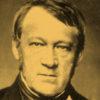 Waitz, Georg (1813–86): Historian, Schelling’s son-in-law through marriage to Schelling’s second daughter, Clara (who died in 1857; he subsequently remarried). He studied history, law, philosophy, and theology in Kiel and Berlin, attaining his doctorate in 1836. From 1842 professor in Kiel, from 1848 in Göttingen. Quite apart from his work as editor of the first edition of Caroline’s letters, Waitz was a significant and well-respected nineteenth-century historian. A native of Flensburg. (Photo: Bernhard Petri.)
Waitz, Georg (1813–86): Historian, Schelling’s son-in-law through marriage to Schelling’s second daughter, Clara (who died in 1857; he subsequently remarried). He studied history, law, philosophy, and theology in Kiel and Berlin, attaining his doctorate in 1836. From 1842 professor in Kiel, from 1848 in Göttingen. Quite apart from his work as editor of the first edition of Caroline’s letters, Waitz was a significant and well-respected nineteenth-century historian. A native of Flensburg. (Photo: Bernhard Petri.)
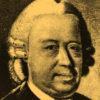 Walch, Christian Wilhelm Franz (1726–10 March 1784), church historian in Göttingen, pursued the historical aspects of theology from the perspective of literary criticism. He married Wilhelmine Walch’s mother, Eleonore Friederike, née Crome, in 1763. Walch was an extremely close friend of Caroline’s father, Johann David Michaelis. (Portrait: Sammlung Voit; SUB Göttingen.)
Walch, Christian Wilhelm Franz (1726–10 March 1784), church historian in Göttingen, pursued the historical aspects of theology from the perspective of literary criticism. He married Wilhelmine Walch’s mother, Eleonore Friederike, née Crome, in 1763. Walch was an extremely close friend of Caroline’s father, Johann David Michaelis. (Portrait: Sammlung Voit; SUB Göttingen.)
Walch, Georg Friedrich (1766–1841): son of Christian Wilhelm Franz Walch; after attaining his doctorate in law in Göttingen in 1790 and working there as a private lecture from 1792, Walch became a professor of law in Heidelberg in 1812.
Walch, Wilhelmine (dates unknown): Daughter of Göttingen professor Christian Wilhelm Franz Walch and childhood friend of Luise Michaelis.
 Walpole, Horace (4th Earl of Oxford) (1717–94): English writer, politician. After the death of his father in 1745, Walpole moved in 1747 to Twickenham into a house that became known as his “little Gothic castle,” “Strawberry Hill,” whose architecture revived the Gothic style. He also had a printing press in the house, where he published his novel The Castle of Otranto (1765), generally acknowledged as the first gothic novel and the one that inaugurated the genre for the eighteenth century (Friedrich Ludwig Wilhelm Meyer translated it into German in 1794). Although it initially appeared pseudonymously and was allegedly a translation from an Italian work by Onuphrio Muralto published in Naples in 1529 and discovered in the library of “an ancient Catholic family in the north of England,” Walpole acknowledged authorship in later editions, explaining it as “an attempt to blend the two kinds of romance, the ancient and the modern. In the former all was imagination and improbability: in the latter, nature is always intended to be, and sometimes has been, copied with success.” (Portrait: after James Macardell, after Sir Joshua Reynolds photogravure, late 19th century [1757]; National Portrait Gallery, London.)
Walpole, Horace (4th Earl of Oxford) (1717–94): English writer, politician. After the death of his father in 1745, Walpole moved in 1747 to Twickenham into a house that became known as his “little Gothic castle,” “Strawberry Hill,” whose architecture revived the Gothic style. He also had a printing press in the house, where he published his novel The Castle of Otranto (1765), generally acknowledged as the first gothic novel and the one that inaugurated the genre for the eighteenth century (Friedrich Ludwig Wilhelm Meyer translated it into German in 1794). Although it initially appeared pseudonymously and was allegedly a translation from an Italian work by Onuphrio Muralto published in Naples in 1529 and discovered in the library of “an ancient Catholic family in the north of England,” Walpole acknowledged authorship in later editions, explaining it as “an attempt to blend the two kinds of romance, the ancient and the modern. In the former all was imagination and improbability: in the latter, nature is always intended to be, and sometimes has been, copied with success.” (Portrait: after James Macardell, after Sir Joshua Reynolds photogravure, late 19th century [1757]; National Portrait Gallery, London.)
Walther, Philipp Franz von (1782–1849): Physician. Began studying medicine at fifteen in Heidelberg, then continued in Vienna. Received his degree in Landshut in 1803, and at twenty-one was appointed a medical Rath and full professor and senior surgeon at the general hospital in Bamberg, where he made the personal acquaintance of Schelling, whose philosophy of nature had profoundly influenced him (evident in his animal physiology, Physiologie der Tiere, 2 vols. [Landshut 1806–8]). Published in Adalbert Friedrich Marcus and Schelling’s Jahrbücher für die Medicin als Wissenschaft. From 1804 professor of physiology in Landshut, later for surgery. From 1818 professor at the newly established university in Bonn (as a colleague of Wilhelm Schlegel), from 1830 in Munich, where he was also personal physician to King Ludwig I.
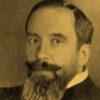 Walzel, Oskar (1864–1944): Austrian literary historian, professor in Bern, Dresden, and Bonn. Representative of a literary-historical methodology oriented more toward intellectual history and the history of ideas, esp. as concerns the Romantic period. Publications include works on Goethe and Romanticism as well as on the periodicals of the Romantic period; editor of Friedrich Schlegel’s letters to his brother Wilhelm. (Portrait: Illustrirte Zeitung [1912].)
Walzel, Oskar (1864–1944): Austrian literary historian, professor in Bern, Dresden, and Bonn. Representative of a literary-historical methodology oriented more toward intellectual history and the history of ideas, esp. as concerns the Romantic period. Publications include works on Goethe and Romanticism as well as on the periodicals of the Romantic period; editor of Friedrich Schlegel’s letters to his brother Wilhelm. (Portrait: Illustrirte Zeitung [1912].)
Warburton, William (1698–1779): From 1759 Bishop of Gloucester; a quarrelsome man engaged in various theological controversies, but also the literary executor of Alexander Pope (edition of 1751) and the editor of an (albeit severely criticized) edition of Shakespeare (1747).
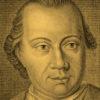 Waser, Johann Heinrich (1742–80): Swiss theologian, though published widely in other fields, e.g., municipal statistics and economics. Became involved in a scandal concerning alleged state secrets he published or allegedly would publish in August Ludwig Schlözer’s periodical Briefwechsel meist historischen und politischen Inhalts; executed in Zürich on 27 May 1780. For more on the scandal, see letter 27. (Portrait: by J. R. Holzhalb after Brunschweiler.)
Waser, Johann Heinrich (1742–80): Swiss theologian, though published widely in other fields, e.g., municipal statistics and economics. Became involved in a scandal concerning alleged state secrets he published or allegedly would publish in August Ludwig Schlözer’s periodical Briefwechsel meist historischen und politischen Inhalts; executed in Zürich on 27 May 1780. For more on the scandal, see letter 27. (Portrait: by J. R. Holzhalb after Brunschweiler.)
Washington, George (1732–99): First president of the United States (1789–97), from June 1775 commander-in-chief of the American revolutionary forces (Continental Army) against Great Britain in the American Revolutionary War.
Weber, Ernst Heinrich (1795–1878): From 1818 professor (extraordinarius) of comparative anatomy in Leipzig, from 1821 full professor of anatomy, from 1840 of physiology, 1838/39 and 1843/44 rector; brother of the Göttingen physicist Wilhelm Eduard Weber.
Weber, Josef (23 September 1753–14 February 1831): Catholic theologian and physicist, studied under the Jesuits in Augsburg and then theology in Dillingen. From 1781 professor of philosophy and physics in Dillingen and pastor in a nearby village, opponent of superstition, e.g., concerning witches and ghosts, publishing a piece that was defended by Johann Michael Sailer (1751–1832). From 1793 prohibited from lecturing on economics and directed to lecture on philosophy only in Latin and not at all on Kant. From 1799 professor of physics and chemistry in Ingolstadt, which was then transferred to Landshut, where together with Sailer and Patritius Zimmer he was part of what became known as the “Dillingen Cloverleaf” (all had been in Dillingen). In 1803 Weber requested he be transferred back to Dillingen, where he became rector of the secondary school and pastor again. From 1820 in Augsburg. (ADB)
Weber, Veit: Pseudonym of Georg Philipp Ludwig Leonhard Wächter (1762–1837): Writer. From 1783 studied theology in Göttingen, where he became acquainted with Gottfired August Bürger. Enthusiasm for the French Revolution prompted him in 1792 to become a member of the army of the Girondist general Charles François Dumouriez; wounded in battle, he published an account of his experiences in 1793. Thereafter resided in Hamburg as a pedagogue, also publishing anti-Napoleon pieces during the French occupation of the city. Perhaps best known for publishing the collection of legends Sagen der Vorzeit (7 vols., 1787–98) under the pseudonym Veit Weber, as well as patriotic novels.
Weckherlin (Wekhyrlin), Georg Rudolf (Rodolf) (1584–1653): Baroque poet. From Württemberg, studied at Tübingen, but travelled extensively, also living for a time in London and marrying an English woman in 1616. After an administrative job in Stuttgart, moved to England permanently after 1620, becoming the predecessor of Milton as Secretary for Foreign Tongues. Because of his time abroad, his poetry was less influenced by the great German Baroque poet Martin Opitz, but also fell more quickly into obscurity before being rediscovered in the late eighteenth century by Johann Gottfried Herder.
 Wedekind, Georg Christian Gottlieb von (8 January 1761 Göttingen–28 October 1831 Darmstadt): Physician, politician, son of Göttingen professor Rudolf Wedekind and brother of Meta Forkel-Liebeskind (because she fled Mainz with her mother, the name Wedekind aroused suspicions among the Prussian troops, prompting her and Caroline’s arrest, Caroline herself having been mistakenly associated with her brother-in-law, Georg Wilhelm Böhmer), from 1781 husband of Luise (Louise) Wilhelmine, née Moller. Received his medical degree in 1780 (19 years old). After positions in Uslar and from 1781 in the Duchy of Diepholz, in 1787 he was appointed personal physician to the prince elector in Mainz, Friedrich Karl Joseph von Erthal, and professor at the university there. 1792–93 active in founding the Jacobin Club in Mainz, for which he became one of the best-known Jacobins associated with the Mainz Republic. See his description in the pro-Prussian list of Clubbists Getreues Namenverzeichnis der in Mainz sich befindenden 454 Klubbisten, mit Bemerkung derselben Charakter (Frankfurt 1793), 16: “Wetekind [sic], a pathetic physician who through a personal reference and out of pity was accepted as a personal physician in princely service with a handsome salary; in the meantime, he rewarded his benefactor with the crudest, most abusive invectives. He contributed to the fall of Mainz [to the French] as a spy and was rewarded by being appointed physician to the French army.” From 1792 physician in military hospitals of the French Army of the Rhine. After dissolution of the university, he became a physician in Kreuznach, was later again active in the military, and from 1808 privy Hofrath and personal physician to the grand duke in Darmstadt. Was the first physician in Germany to vaccinate against cowpox. (Portrait ca. 1800: engraving by G. Reußling.)
Wedekind, Georg Christian Gottlieb von (8 January 1761 Göttingen–28 October 1831 Darmstadt): Physician, politician, son of Göttingen professor Rudolf Wedekind and brother of Meta Forkel-Liebeskind (because she fled Mainz with her mother, the name Wedekind aroused suspicions among the Prussian troops, prompting her and Caroline’s arrest, Caroline herself having been mistakenly associated with her brother-in-law, Georg Wilhelm Böhmer), from 1781 husband of Luise (Louise) Wilhelmine, née Moller. Received his medical degree in 1780 (19 years old). After positions in Uslar and from 1781 in the Duchy of Diepholz, in 1787 he was appointed personal physician to the prince elector in Mainz, Friedrich Karl Joseph von Erthal, and professor at the university there. 1792–93 active in founding the Jacobin Club in Mainz, for which he became one of the best-known Jacobins associated with the Mainz Republic. See his description in the pro-Prussian list of Clubbists Getreues Namenverzeichnis der in Mainz sich befindenden 454 Klubbisten, mit Bemerkung derselben Charakter (Frankfurt 1793), 16: “Wetekind [sic], a pathetic physician who through a personal reference and out of pity was accepted as a personal physician in princely service with a handsome salary; in the meantime, he rewarded his benefactor with the crudest, most abusive invectives. He contributed to the fall of Mainz [to the French] as a spy and was rewarded by being appointed physician to the French army.” From 1792 physician in military hospitals of the French Army of the Rhine. After dissolution of the university, he became a physician in Kreuznach, was later again active in the military, and from 1808 privy Hofrath and personal physician to the grand duke in Darmstadt. Was the first physician in Germany to vaccinate against cowpox. (Portrait ca. 1800: engraving by G. Reußling.)
Wedekind, Luise (Louise) Wilhelmine, née Moller (dates unknown): From 1 Februar 1781 wife of Georg Christian Wedekind. Transferred to Königstein prison in June 1793.
Wedekind, Rudolf (1716–78): Protestant theologian, Old Testament scholar, and professor of philosophy in Göttingen. Husband of Sophia Magdalena Wedekind, father of Georg Wedekind and Meta Forkel (later married name Liebeskind). Received his theological masters in Göttingen in 1740, then from 1741 worked as conrector of the Gymnasium in Göttingen, from 1743 school director. Taught at the university from 1746.
Wedekind, Sophia Magdalena, née Morrien (dates unknown): Wife of the Göttingen Old Testament theologian and philosophy professor Rudolf Wedekind (1716–78) and daughter of the Göttingen mayor Georg Friedrich Morrien. She was the mother of Georg Wedekind and Meta Forkel (later married name Liebeskind). Taken prisoner by the Prussians along with Caroline and Meta Forkel while trying to flee Mainz in the spring of 1793.
Wedgwood, Joseph [Josiah] C. (1730–95): Founder of British pottery and porcelain firm 1759, grandfather of Charles Darwin, the latter of whom also married one of his granddaughters. Wedgwood’s high-quality glazes set his wares apart and delighted the new English merchant classes. His factory was named after the Etruria district of Italy, where black porcelain dating to Etruscan times was being excavated. Wedgwood duplicated this porcelain in 1768 with what he called “black basalt”; the company is also known for its styles of Queen’s Ware (1762) and Jasper (1774). His business partner was Thomas Bentley.
Wegener, Wilhelm Gabriel (1767–1837): Theologian, early Berlin friend of Alexander von Humboldt, from 1785 till 1788 at the Viadrina university in Frankfurt (Oder), where he met the Humboldt brothers; from 1789 till 1795 military chaplain in Berlin.
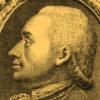 Weikard (Weickard), Melchior Adam (not Adam Melchior) (1742–1803): Physician, philosopher. From 1758 studied medicine in Würzburg, receiving his doctorate in 1763 and thereafter working as a mineral-springs spa physician in Brückenau. From 1770 personal physician to the Fulda prince bishop Heinrich von Bibra and serving as professor of medicine in Fulda. From 1784 court physician in St. Petersburg, whence he accompanied the czarina on a journey to the Crimea. From 1788 personal physician to Prince Bishop Dalberg in Mainz, from 1792 physician in Mannheim, from 1794 in Heilbronn, then temporarily in Russia again (with Paul I in Petersburg), then head of the medical college in Fulda. Published prolifically, including on the spa in Bad Brückenau and on the theories of the English physician John Brown, of whom Weikard was a follower; author of well-known work, Der philosophische Arzt (1775–77). (Portrait: Engraving by E. Verhelst.)
Weikard (Weickard), Melchior Adam (not Adam Melchior) (1742–1803): Physician, philosopher. From 1758 studied medicine in Würzburg, receiving his doctorate in 1763 and thereafter working as a mineral-springs spa physician in Brückenau. From 1770 personal physician to the Fulda prince bishop Heinrich von Bibra and serving as professor of medicine in Fulda. From 1784 court physician in St. Petersburg, whence he accompanied the czarina on a journey to the Crimea. From 1788 personal physician to Prince Bishop Dalberg in Mainz, from 1792 physician in Mannheim, from 1794 in Heilbronn, then temporarily in Russia again (with Paul I in Petersburg), then head of the medical college in Fulda. Published prolifically, including on the spa in Bad Brückenau and on the theories of the English physician John Brown, of whom Weikard was a follower; author of well-known work, Der philosophische Arzt (1775–77). (Portrait: Engraving by E. Verhelst.)
 Weiller, Kajetan (1761–1826): A native of Munich, from 1785 a priest, from 1799 professor and rector at the secondary school (lyceum) there, from 1807 member (with Schelling) of the Bavarian Academy of Sciences and Humanities. An admirer (with Jakob Salat in Munich) of the work of Friedrich Heinrich Jacobi, his publications generally reflected the liberal cast of theological writing in Bavaria at the time, he was a particularly resolute and spiteful opponent of Schelling’s philosophy, e.g. (with a title recalling Franz Berg’s earlier smear against Schelling) Der Geist der allerneuesten Philosophie der Herren Schelling, Hegel und Kompagnie: Eine Uebersetzung aus der Schulsprache in die Sprache der Welt . . . Zum Gebrauche für das gebildetere Publikum überhaupt, vol. 1 (Munich 1803). “A serious, stern-looking man, and a cold philosopher, but of firm principles” (Joseph Wolff, Travels and Adventures [London 1861], 11). (Portrait: unknown artist; Bavarian Academy of Sciences and Humanities.)
Weiller, Kajetan (1761–1826): A native of Munich, from 1785 a priest, from 1799 professor and rector at the secondary school (lyceum) there, from 1807 member (with Schelling) of the Bavarian Academy of Sciences and Humanities. An admirer (with Jakob Salat in Munich) of the work of Friedrich Heinrich Jacobi, his publications generally reflected the liberal cast of theological writing in Bavaria at the time, he was a particularly resolute and spiteful opponent of Schelling’s philosophy, e.g. (with a title recalling Franz Berg’s earlier smear against Schelling) Der Geist der allerneuesten Philosophie der Herren Schelling, Hegel und Kompagnie: Eine Uebersetzung aus der Schulsprache in die Sprache der Welt . . . Zum Gebrauche für das gebildetere Publikum überhaupt, vol. 1 (Munich 1803). “A serious, stern-looking man, and a cold philosopher, but of firm principles” (Joseph Wolff, Travels and Adventures [London 1861], 11). (Portrait: unknown artist; Bavarian Academy of Sciences and Humanities.)
Weiss, Christian Samuel (1780–1856): German mineralogist and crystallographer. Studied in Leipzig, Berlin, and at the mining academy in Freiberg. From 1803 taught at Leipzig, from 1808 as professor of physics, from 1810 in Berlin in mineralogy, where he developed the mathematical branch of mineralogy with respect to crystals, publishing Über die natürlichen Abteilungen der Krystallisationssystems in 1813.
 Weisse, Christian Felix (1726–1804): Prolific poet, editor, translator, children’s author. From 1745 studied in Leipzig, at the time a literary and theater center, where he became acquainted with Lessing, with whom he shared a love of the theater. Wrote a whole series of comedies for the theater in Leipzig. From 1759 editor of Friedrich Nicolai’s Bibliothek der schönen Wissenschaften und der freyen Künste (after 1765 Neue Bibliothek etc.), at the time already a rather outmoded journal. From 1762 district tax collector in Leipzig. Became enormously popular as a children’s author, even beyond Germany itself. His periodical Der Kinderfreund (24 vols., 1775–82), and its continuation in the Briefwechsel des Kinderfreundes (12 vols., 1784–92) enjoyed pan-European success. Some of his lyric poetry tended toward the Anacreontics (praising wine and love), though he also published patriotic poems. For a time during the 1760s he also was quite influential for his dramatic pieces, including tragedies, and especially his operettas and singspiele, which to a certain extent he pioneered (e.g., Die Jagd, 1770, with music by J. A. Hillier). One of his tragedies, Romeo und Julie (1767), was one of the most popular plays of the time. His later comedies were influenced by the French comédie larmoyante. (Portrait: Jacob Minor, Lessings Jugendfreunde: Chr. Felix Weisse, Joh. Friedr. v. Cronegh, Joach. Wilh. v. Brawe, Friedrich Nicolai, Deutsche National-Literattur: Historisch kritische Ausgabe 72 [Berlin, Stuttgart n.d.], vii.)
Weisse, Christian Felix (1726–1804): Prolific poet, editor, translator, children’s author. From 1745 studied in Leipzig, at the time a literary and theater center, where he became acquainted with Lessing, with whom he shared a love of the theater. Wrote a whole series of comedies for the theater in Leipzig. From 1759 editor of Friedrich Nicolai’s Bibliothek der schönen Wissenschaften und der freyen Künste (after 1765 Neue Bibliothek etc.), at the time already a rather outmoded journal. From 1762 district tax collector in Leipzig. Became enormously popular as a children’s author, even beyond Germany itself. His periodical Der Kinderfreund (24 vols., 1775–82), and its continuation in the Briefwechsel des Kinderfreundes (12 vols., 1784–92) enjoyed pan-European success. Some of his lyric poetry tended toward the Anacreontics (praising wine and love), though he also published patriotic poems. For a time during the 1760s he also was quite influential for his dramatic pieces, including tragedies, and especially his operettas and singspiele, which to a certain extent he pioneered (e.g., Die Jagd, 1770, with music by J. A. Hillier). One of his tragedies, Romeo und Julie (1767), was one of the most popular plays of the time. His later comedies were influenced by the French comédie larmoyante. (Portrait: Jacob Minor, Lessings Jugendfreunde: Chr. Felix Weisse, Joh. Friedr. v. Cronegh, Joach. Wilh. v. Brawe, Friedrich Nicolai, Deutsche National-Literattur: Historisch kritische Ausgabe 72 [Berlin, Stuttgart n.d.], vii.)
 Weitsch (Waitsch), Christiane Elisabeth, née Schröder (ca. 1766–ca. 1842): Youngest daughter of the royal steward of the Salzdahlum Castle, summer residence of Duke Anton Ulrich von Braunschweig-Wolfenbüttel, which Caroline and Auguste visited during the summer and autumn of 1795. From 24 August 1794 married to the painter and engraver Friedrich Georg Weitsch (1758–1828), who after studying and working in Braunschweig, Kassel, Düsseldorf, Amsterdam, and Italy (where for three months he accompanied Baron Friedrich Moritz Brabeck of Söder, whose art gallery Caroline and Wilhelm Schlegel would visit during the autumn of 1800 after Auguste’s death) became a member of the Berlin Academy of Art in 1794. He first visited Berlin in 1795, then from 1797 taught historical painting at the academy, which he also served as rector from 1798; that same year he was appointed court painter in Berlin. Because his portraits included Alexander von Humboldt and Marcus Herz — husband of Henriette Herz — both of whom were acquaintances of Dorothea Veit — it was possibly through these people that Dorothea made the acquaintance of his wife, whose countenance she maintained was similar to that of Caroline, including, e.g., that she appeared younger than she was (letter 247c) (Portrait here: Der Künstler und seine Frau Christiane Elisabeth geb. Schröder, [1800], Städtisches Museum Braunschweig). Remarkably, the Allgemeines Künstlerlexikon, vol. 2, part 11 (Zürich 1820), 6087, confirms this assessment:
Weitsch (Waitsch), Christiane Elisabeth, née Schröder (ca. 1766–ca. 1842): Youngest daughter of the royal steward of the Salzdahlum Castle, summer residence of Duke Anton Ulrich von Braunschweig-Wolfenbüttel, which Caroline and Auguste visited during the summer and autumn of 1795. From 24 August 1794 married to the painter and engraver Friedrich Georg Weitsch (1758–1828), who after studying and working in Braunschweig, Kassel, Düsseldorf, Amsterdam, and Italy (where for three months he accompanied Baron Friedrich Moritz Brabeck of Söder, whose art gallery Caroline and Wilhelm Schlegel would visit during the autumn of 1800 after Auguste’s death) became a member of the Berlin Academy of Art in 1794. He first visited Berlin in 1795, then from 1797 taught historical painting at the academy, which he also served as rector from 1798; that same year he was appointed court painter in Berlin. Because his portraits included Alexander von Humboldt and Marcus Herz — husband of Henriette Herz — both of whom were acquaintances of Dorothea Veit — it was possibly through these people that Dorothea made the acquaintance of his wife, whose countenance she maintained was similar to that of Caroline, including, e.g., that she appeared younger than she was (letter 247c) (Portrait here: Der Künstler und seine Frau Christiane Elisabeth geb. Schröder, [1800], Städtisches Museum Braunschweig). Remarkably, the Allgemeines Künstlerlexikon, vol. 2, part 11 (Zürich 1820), 6087, confirms this assessment:
. . . for she is a universally respected woman of the most amiable character who possesses talents of various sorts and who even today, despite having already passed her 53rd year, can be considered a young and beautiful woman. Friedrich often used her hands as models and did several portraits of her herself.
A different manuscript (“Künstler[auto]biographien,” transcription of 14 autobiographies by founding members of the Berlin Künstlerverein, 13; cited in Reimar F. Lacher, Friedrich Georg Weitsch (Braunschweig 1758–1828 Berlin). Maler, Kenner, Sammler, Akademiker, Diss. Berlin [2003]; see also Reimar F. Lacher, Friedrich Georg Weitsch [Braunschweig 1758–1828 Berlin]: Maler, Kenner, Akademiker [Berlin 2005]) adds:
The talents of this muse, and her beautiful voice, had won for her all the hearts in Braunschweig, and her unassuming disposition made her a favorite among everyone. Her figure and bearing and unaffected gait give her a youthful appearance, the delicate features of her face, beautiful black eyes, and healthy, radiant coloring make it possible for her to be considered a beautiful young woman in her best years even after 25 years of marriage, despite having already passed her 53rd year.
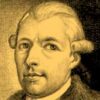 Weishaupt, Adam (1748–1830): A native of Gotha, became a professor in Ingolstadt in 1772. Founded the order of the Illuminati in 1776. After its proscription in Bavaria in 1784, he found protection from Ernst II in Gotha (who was himself a member of the Illuminati), where he remained for the rest of his life. (Portrait: by Christoph Wilhelm Bock after Gottfried Valentin Mansinger Leipzig, Universitätsbibliothek Leipzig, Porträtstichsammlung, Inventar-Nr. IIAIV, 1983 Bl.5.)
Weishaupt, Adam (1748–1830): A native of Gotha, became a professor in Ingolstadt in 1772. Founded the order of the Illuminati in 1776. After its proscription in Bavaria in 1784, he found protection from Ernst II in Gotha (who was himself a member of the Illuminati), where he remained for the rest of his life. (Portrait: by Christoph Wilhelm Bock after Gottfried Valentin Mansinger Leipzig, Universitätsbibliothek Leipzig, Porträtstichsammlung, Inventar-Nr. IIAIV, 1983 Bl.5.)
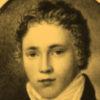 Welcker, Ernst (1798–1858): Pastor in Oberofleiden on the Ohm River in the Amöneburg Valley in Hesse. From 1815 student of theology in Giessen, from 1817 in Heidelberg. From 8 January 1821 vicar to his father in Oberofleiden, marrying Minna Wiedemann on 1 November 1821, though she died that very November. From 6 June 1826 pastor. (Portrait: Otto Cramer Family Archives, courtesy of Martin Reulecke.)
Welcker, Ernst (1798–1858): Pastor in Oberofleiden on the Ohm River in the Amöneburg Valley in Hesse. From 1815 student of theology in Giessen, from 1817 in Heidelberg. From 8 January 1821 vicar to his father in Oberofleiden, marrying Minna Wiedemann on 1 November 1821, though she died that very November. From 6 June 1826 pastor. (Portrait: Otto Cramer Family Archives, courtesy of Martin Reulecke.)
 Welcker, Friedrich Gottlieb (1784–1868): Elder brother of Karl Theodor and Ernst Welcker and thus brother-in-law of Luise Wiedemann’s (née Michaelis) daughters; one of the most significant philologists and scholars of antiquity in the nineteenth century. From 1801 studied classical philology in Giessen, from 1803 teacher in a preparatory school, from 1804 private lecturer. From 1806 in Italy as a tutor to the family of Wilhelm von Humboldt. From 1809 (at Humboldt’s recommendation) professor of Greek literature and archaeology in Giessen (first academic offering of archaeology at a German university). From 1816 professor in Göttingen, from 1819 in Bonn, where he founded the university library and became its director. Because of his liberal political leanings, was arrested in the wake of the Carlsbad Decrees (1819). (Portrait: Adolf Hohneck 1840; from Bildnisse Göttinger Professoren aus zwei Jahrhunderten [1737—1937] [Göttingen 1937].)
Welcker, Friedrich Gottlieb (1784–1868): Elder brother of Karl Theodor and Ernst Welcker and thus brother-in-law of Luise Wiedemann’s (née Michaelis) daughters; one of the most significant philologists and scholars of antiquity in the nineteenth century. From 1801 studied classical philology in Giessen, from 1803 teacher in a preparatory school, from 1804 private lecturer. From 1806 in Italy as a tutor to the family of Wilhelm von Humboldt. From 1809 (at Humboldt’s recommendation) professor of Greek literature and archaeology in Giessen (first academic offering of archaeology at a German university). From 1816 professor in Göttingen, from 1819 in Bonn, where he founded the university library and became its director. Because of his liberal political leanings, was arrested in the wake of the Carlsbad Decrees (1819). (Portrait: Adolf Hohneck 1840; from Bildnisse Göttinger Professoren aus zwei Jahrhunderten [1737—1937] [Göttingen 1937].)
 Welcker, Heinrich Friedrich Philipp Christoph (1756–1829): Pastor, father of Friedrich Gottlieb, Carl Theodor, and Ernst Welcker, hence father-in-law of Emma and Minna Wiedemann. On 13 December 1781 married Johanette, née Strack. (Portrait: Otto Cramer Family Archives, courtesy of Martin Reulecke.)
Welcker, Heinrich Friedrich Philipp Christoph (1756–1829): Pastor, father of Friedrich Gottlieb, Carl Theodor, and Ernst Welcker, hence father-in-law of Emma and Minna Wiedemann. On 13 December 1781 married Johanette, née Strack. (Portrait: Otto Cramer Family Archives, courtesy of Martin Reulecke.)
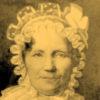 Welcker, Johanette Dorothea, née Strack (1757–1829): from 13 December 1781 wife of Heinrich Friedrich Philipp Christoph Welcker, mother of Friedrich Gottlieb, Carl Theodor, and Ernst Welcker, hence mother-in-law of Emma and Minna Wiedemann. (Portrait: Otto Cramer Family Archives, courtesy of Martin Reulecke.)
Welcker, Johanette Dorothea, née Strack (1757–1829): from 13 December 1781 wife of Heinrich Friedrich Philipp Christoph Welcker, mother of Friedrich Gottlieb, Carl Theodor, and Ernst Welcker, hence mother-in-law of Emma and Minna Wiedemann. (Portrait: Otto Cramer Family Archives, courtesy of Martin Reulecke.)
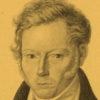 Welcker (Welker), Karl (Carl) Theodor (1790–1869): Law professor and liberal politician, brother of Ernst Welcker. From 12 May 1816 husband of Emma Wiedemann (Minna Wiedemann married Ernst in 1821); from 1815 professor of law in Kiel, from 1816 in Heidelberg, 1819 in Bonn, 1822 in Freiburg. Participated in the Wars of Liberation in 1814, edited the liberal periodical Kieler Blätter, sent into early retirement in 1832 because of his political engagement, after which, while remaining politically active, he published the variously proscribed liberal newspaper Der Freisinnige. (Portrait: Universitätsbibliothek Leipzig; Bilddatei: ubliiaiv-1990bl-12.)
Welcker (Welker), Karl (Carl) Theodor (1790–1869): Law professor and liberal politician, brother of Ernst Welcker. From 12 May 1816 husband of Emma Wiedemann (Minna Wiedemann married Ernst in 1821); from 1815 professor of law in Kiel, from 1816 in Heidelberg, 1819 in Bonn, 1822 in Freiburg. Participated in the Wars of Liberation in 1814, edited the liberal periodical Kieler Blätter, sent into early retirement in 1832 because of his political engagement, after which, while remaining politically active, he published the variously proscribed liberal newspaper Der Freisinnige. (Portrait: Universitätsbibliothek Leipzig; Bilddatei: ubliiaiv-1990bl-12.)
Wenner, Franz (dates unknown): Bookseller in Frankfurt, head of Varrentrapp Sohn & Wenner. During Caroline’s imprisonment (and in at least once instance afterward as well, when she was in Lucka), Caroline had her correspondents address her letters to him (see letters 129, 130, 134). He is also possibly the person through whom Georg Forster’s letters and manuscripts were rescued from Mainz and eventually passed along to Forster’s family (see Therese Huber Briefe 1:651). Possibly also either the author or acquaintance of the author of the satirical play The Mainz Clubbists.
Werff, Adriaen van der (1659–1722): Dutch painter known for biblical, mythological, and genre scenes.
Werner, Abraham Gottlob (1750–1817): Instructor at the mining academy in Freiberg in Saxony. First to treat geology and mineralogy as two separate disciplines; his thought’s combination of empiricism and speculation made it kindred with that of Romanticism. Friedrich von Hardenberg (Novalis) and Henrik Steffens studied under him in Freiberg, though also Franz von Baader.
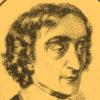 Werner, Zacharias (1768–1823): Dramatist. 1784–89 studied law and public finance in Königsberg, 1793–1807 worked as a civil administrator in Prussian service, after which he made his living as a writer. Turned to writing plays under the influence of Schiller and Tieck and the writings of the Schlegels. Between 1807 and 1810 he led an itinerant life in Europe, including time in Weimar and at the estate of Madame de Staël in Coppet in Switzerland. Inclined toward mysticism, converted to Catholicism in Rome in 1810, ordained priest in 1813, eventually settled primarily in Vienna, where he was a popular preacher during the Congress of Vienna. Some of his plays prior to his conversion had patriotic tendencies, and one, Martin Luther oder die Weihe der Kraft (1807), created a bit of a scandal when performed in 1806 in Berlin. His tragedy of fate, Der vierundzwanzigste Februar (performed 1810 in Weimar), provided a model for similar plays of fate during the first half of the nineteenth century. Portrait: in Gustav Könnecke, Bilderatlas zur Geschichte der deutschen Nationallitteratur, 2nd ed. [Marburg 1895], 356.)
Werner, Zacharias (1768–1823): Dramatist. 1784–89 studied law and public finance in Königsberg, 1793–1807 worked as a civil administrator in Prussian service, after which he made his living as a writer. Turned to writing plays under the influence of Schiller and Tieck and the writings of the Schlegels. Between 1807 and 1810 he led an itinerant life in Europe, including time in Weimar and at the estate of Madame de Staël in Coppet in Switzerland. Inclined toward mysticism, converted to Catholicism in Rome in 1810, ordained priest in 1813, eventually settled primarily in Vienna, where he was a popular preacher during the Congress of Vienna. Some of his plays prior to his conversion had patriotic tendencies, and one, Martin Luther oder die Weihe der Kraft (1807), created a bit of a scandal when performed in 1806 in Berlin. His tragedy of fate, Der vierundzwanzigste Februar (performed 1810 in Weimar), provided a model for similar plays of fate during the first half of the nineteenth century. Portrait: in Gustav Könnecke, Bilderatlas zur Geschichte der deutschen Nationallitteratur, 2nd ed. [Marburg 1895], 356.)
Wernicke, Georg Wilhelm (dates unknown) (Caroline spells his name Warneke): Actor from Göttingen who debuted in Gotha on 1 February 1779 as the Baron in the play by Niccolò Piccinni, Johann Joachim Eschenburg, and Carlo Goldoni, Das gute Mädchen, eine Operette in drey Akten (Leipzig 1778). After the suspension of the theater there, he was not yet affiliated with another company.
Werthern, Christiane von, née von Globig (1759–1829): Second wife of Count Johann Georg Heinrich von Werthern.
Werthern, Count Johann Georg Heinrich von (1735–90) (from a Thuringian line of nobility): A court official in Gotha, later Prussian minister of state, minister of war, and Grand maître de la Garderobe during the final years of Friedrich II (the Great). Caroline mentions his two wives in letter 17:
(1) (first wife) Countess Johanna Sophie Louise Friederike, née (Johanna Schack von) Buchwald (5 August 1740–3 January 1764):
Louise, to whom Caroline refers as the count’s “first wife” in letter 17, the daughter of Juliane Franziska von Buchwald, became a lady-in-waiting at the Gotha court at sixteen and then, on 2 November 1762, married the count. According to Friedrich Wilhelm Gotter, Luise died after choking on a bone (Zum Andenken der Frau von Buchwald [Gotha 1790] 52–54n11 [(supplementary appendix 17.1]).
(2) (second wife) Christiane, née von Globig (1759–1829):
The count remarried on 2 April 1777, to Christiane Benedictine Johanna von Globig (born 1759), to whom Caroline refers as the wife “whom he married a long time after the death of his first wife”; she resided in Weimar after his death in 1790.
Werthern, Johanna Sophie Louise Friederike von, née (Johanna Schack von) Buchwald (5 August 1740–3 January 1764): From 2 November 1762 first wife of Count Johann Georg Heinrich von Werthern, daughter of Schack Hermann von Buchwald and Juliane Franziska von Buchwald. Died in Gotha after choking on a bone (recounted by Friedrich Wilhelm Gotter, Zum Andenken der Frau von Buchwald [Gotha 1790], 52–54n11; supplementary appendix 17.1)
 Wesselhöft, Johann Karl (Carl) (1767–1847): Head of printing company, brother of Johanna Frommann. From 1790 in Chemnitz, from 1799 in Jena together with Friedrich Frommann. Both sons emigrated to the United States, eventually founding a medical institute in Brattleboro, Vermont. (Portrait: 1829 by Friedrich Preller; Inspektorhaus des botanischen Gartens in Jena; repr. in Freundliches Begegnen: Goethe, München Herzlieb und das Frommannsche Haus, ed. Günther H. Wahnes [Jena 1927], following. p. 128.)
Wesselhöft, Johann Karl (Carl) (1767–1847): Head of printing company, brother of Johanna Frommann. From 1790 in Chemnitz, from 1799 in Jena together with Friedrich Frommann. Both sons emigrated to the United States, eventually founding a medical institute in Brattleboro, Vermont. (Portrait: 1829 by Friedrich Preller; Inspektorhaus des botanischen Gartens in Jena; repr. in Freundliches Begegnen: Goethe, München Herzlieb und das Frommannsche Haus, ed. Günther H. Wahnes [Jena 1927], following. p. 128.)
Wesselhöft, Margareta Elisabeth (Betty) (1774–1842): Daughter of Johann Karl Wesselhöft in Hamburg, sister of Johanne Frommann, née Wesselhöft. Never married; moved to Jena in 1808 with her sister, Johanna Sophie Bohn, the latter’s two sons, and her mother, Sophie Charlotte Bohn. Published annotated translations from English, including novels and biographies, also edited anthologies. Had a hand in the Frommann publishing business in Jena.
Wesselhöft, Sophie (Sophia) Charlotte, née Bohn († 1809): Daughter of the Hamburg bookseller Johann Karl Bohn, wife of Johann Karl Wesselhöft; mother of Johanne Frommann. Moved to Jena in 1808 with her daughters Johanna Sophie Bohn and Elisabeth (Betty) Wesselhöft.
Westfeld, Christian Friedrich Gotthard (1746–1823): a Hannoverian administrator and monastery bailiff, cameralist, and mineralogist; studied in Göttingen and from 1778 served as bailiff in Wülfinghausen near Hannover, then from 1 May 1795 as bailiff in Weende, north of Göttingen, where he succeeded Anton Gabriel Christian Cleve. It was Westfeld’s daughter Sophie Julie who married Friedrich Bouterwek in 1806 (Bouterwek had earlier met Luise Michaelis in Weende, courting her unsuccessfully).
Westphal, Ludwig Baron von: Native of Braunschweig, student in Göttingen from 16 October 1789.
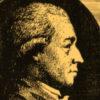 Wezel, Johann Karl (1747–1819): Novelist, dramatist, poet, pedagogue. Of uncertain origin but apparently musically gifted (violin), from 1764 studied first theology, then law, philosophy, and theology in Leipzig, staying at the house of Christian Fürchtegott Gellert. Worked as a private house tutor, traveled to St. Petersburg, Paris, and London, worked as a playwright in Vienna 1782–84, from 1784 back in Leipzig, from 1793 in Sonderhausen. Published anti-idealistic, anti-utopian novels influenced by Jonathan Swift, Voltaire, Henry Fielding, Samuel Johnson, and Laurence Sterne, includng Robinson Krusoe (1780), Wilhelmine Arend, oder die Gefahren der Empfindsamkeit (2 vols., 1782), and the comic novel Hermann und Ulrike. Ein komischer Roman (4 vols., 1780), as well Belphegor, oder die wahrscheinlichste Geschichte unter der Sonne (2 vols., 1776), as a German counterpart to Swift’s Gulliver’s Travels and Voltaire’s Candide. (Portrait: copper engraving by Christian Gottlieb Geyser.)
Wezel, Johann Karl (1747–1819): Novelist, dramatist, poet, pedagogue. Of uncertain origin but apparently musically gifted (violin), from 1764 studied first theology, then law, philosophy, and theology in Leipzig, staying at the house of Christian Fürchtegott Gellert. Worked as a private house tutor, traveled to St. Petersburg, Paris, and London, worked as a playwright in Vienna 1782–84, from 1784 back in Leipzig, from 1793 in Sonderhausen. Published anti-idealistic, anti-utopian novels influenced by Jonathan Swift, Voltaire, Henry Fielding, Samuel Johnson, and Laurence Sterne, includng Robinson Krusoe (1780), Wilhelmine Arend, oder die Gefahren der Empfindsamkeit (2 vols., 1782), and the comic novel Hermann und Ulrike. Ein komischer Roman (4 vols., 1780), as well Belphegor, oder die wahrscheinlichste Geschichte unter der Sonne (2 vols., 1776), as a German counterpart to Swift’s Gulliver’s Travels and Voltaire’s Candide. (Portrait: copper engraving by Christian Gottlieb Geyser.)
Wichmann (or Spielmann), Wilhelmine (dates unknown): A “dissolute” (so Sophie Bernhardi) maidservant in the house of August Ferdinand and Sophie Bernhardi in Berlin who was to be heard as a witness in the Bernhardis’ child-custody case, to wit, because she could allegedly prove that Sophie Bernhardi had engaged in an adulterous relationship with Karl Gregor von Knorring.
Widder, Heinrich von (1772–1812): Bavarian legation secretary and governmental Rath.
 Wiebeking, Charlotte Elisabeth Susanne Pauline (from 1808:) von, née Rousseau (1769–1835): Daughter of Jacques August Rousseau and Sara Dorothea née Schläger in Gotha (and thus granddaughter of Mother Schläger) and from 1788 married to Karl Friedrich (von) Wiebeking. Corresponded with Carl Maria von Weber. Her sister Dorette (Charlotte) married Adolf Heinrich Friedrich Schlichtegroll in 1792. (Portrait by J. Fertig: München, Staatliche Graphische Sammlung, Inv.-Nr. 244329 D: Staatliche Graphische Sammlung München; Bilddatei: gs244329d.)
Wiebeking, Charlotte Elisabeth Susanne Pauline (from 1808:) von, née Rousseau (1769–1835): Daughter of Jacques August Rousseau and Sara Dorothea née Schläger in Gotha (and thus granddaughter of Mother Schläger) and from 1788 married to Karl Friedrich (von) Wiebeking. Corresponded with Carl Maria von Weber. Her sister Dorette (Charlotte) married Adolf Heinrich Friedrich Schlichtegroll in 1792. (Portrait by J. Fertig: München, Staatliche Graphische Sammlung, Inv.-Nr. 244329 D: Staatliche Graphische Sammlung München; Bilddatei: gs244329d.)
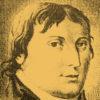 Wiebeking, Georg Heinrich Karl Christian Friedrich (from 1808:) von (1762–1842): From 1788 married to Charlotte, née Rousseau. Hydrologist, architect, geographer recognized as a premier authority on hydraulic engineering. Employed first in Hesse-Darmstadt, from 1802 in Vienna, then 1805–17 head of municipal works for water, bridges, and streets in Munich. From 1807 a member of the Bavarian Academy of Sciences and Humanities, ennobled in 1808. Undertook various reroutings of the Isar River in Munich and of the Danube near Dillingen, also contributed to the Bavarian-wide systems of roads and highways and was active in cartography. Was in Gotha from 1784 (where Luise Michaelis made his acquaintance) doing topographical measurements. (Portrait: engraving by Anton Wachsmann.)
Wiebeking, Georg Heinrich Karl Christian Friedrich (from 1808:) von (1762–1842): From 1788 married to Charlotte, née Rousseau. Hydrologist, architect, geographer recognized as a premier authority on hydraulic engineering. Employed first in Hesse-Darmstadt, from 1802 in Vienna, then 1805–17 head of municipal works for water, bridges, and streets in Munich. From 1807 a member of the Bavarian Academy of Sciences and Humanities, ennobled in 1808. Undertook various reroutings of the Isar River in Munich and of the Danube near Dillingen, also contributed to the Bavarian-wide systems of roads and highways and was active in cartography. Was in Gotha from 1784 (where Luise Michaelis made his acquaintance) doing topographical measurements. (Portrait: engraving by Anton Wachsmann.)
Karl Friedrich and Charlotte von Wiebeking had two daughters:
Wiedau, Melchior von (Caroline’s orthography: Widow): from Livonia, accompanied August Ludwig Schlözer on his trip to Italy with Schlözer’s daughter, Dorothea, in 1781/82.
Wiedemann, Christian Rudolf Wilhelm (7 December 1770–31 December 1840): Physician, natural scientist, entomologist. Caroline’s brother-in-law, from 1796 husband of Luise Michaelis (in 1795, when Luise moved to Braunschweig with her mother, he had just returned from a stay in England). A native of Braunschweig, received his medical doctorate in Jena in 1792, thereafter also studying mineralogy in England. From 1794 professor of anatomy at the Institute for Anatomy and Surgery in Braunschweig. As mentioned in Luise Wiedemann’s memoirs, he also translated to enhance the family income, being fluent in Latin, English, French, and Italian. Studied birthing techniques (interpubic incisions) in Paris. From 1805 professor of obstetrics, co-director, and head instructor at the Institute of Obstetrics in Kiel with the title of counselor of state (Etatsrath). Publications include Handbuch der Anatomie (1796) and the Lehrbuch für Hebammen (1814), the latter a handbook of midwifery, as well as a guide to first-aid and for cowpox vaccination. Contributed to early understanding and advocacy of Caesarian section in connection with a case in 1804. Also published in geology (his collections went to the university in Kiel), entomology, and on English literature. ADB 42:380 is thus incorrect in stating that he married “a daughter of the Harburg physician G. P. Michaelis and was thus the uncle of Gustav Adolph Michaelis, who was raised in his house and also considerably stimulated by his uncle’s variety of interests (Julie Michaelis geb. Jahn [Leipzig 1893], 18).” Gustav Adolph (born 1798), Philipp Michaelis’s son, was indeed raised in his house after Philipp’s death in 1813, but Wiedemann married his aunt, not his sister. – For the text of a short biography by his grandson, see supplementary appendix Christian Rudolf Wilhelm Wiedemann.
List of children from Luise Wiedemann, née Michaelis, Erinnerungen, 98:
Christian Rudolf Wilhelm Wiedemann († 31 December 1840) and his wife, Louise Friederike Michaelis, married on 28 March 1796, and had the following children:
1. Conrad Rudolph Wiedemann (born at 10:00 p.m. on 29 February 1797–14 March 1798).
2. Emma Wiedemann (born at 9:00 p.m. on 1 October 1798): From 12 May 1816 married to Carl Theodor Welcker, professor emeritus in Giessen, Kiel, Heidelberg, Bonn, Freiburg. (Portrait: Otto Cramer Family Archives, courtesy of Martin Reulecke.)
[Children of Emma and Karl Friedrich Welcker: Adolph (according to handwritten list: Rudolph), Otto, and Bertha († 1837).]
3. August Ferdinand Wiedemann (born ca. 7–8:00 a.m. on 2 August 1800–10 March 1801) (Caroline witnessed his death in Braunschweig).
4. Minna Eleonore Louise Friedericke Wiedemann (born 8–9:00 p.m. on 18 August [according to Luise Wiedemann’s memoirs:] 1801 [correct: 1802]–26 February 1875). From 1 November 1821 married to Pastor Ernst Welcker [brother of Carl Theodor Welcker] in Obernfleiden [Ober-Ofleiden] in the Grand Duchy of Hesse. [Daughter: Emma] (Portrait: Otto Cramer Family Archives, courtesy of Martin Reulecke.)
5. Maria Wiedemann (3 September 1804–June 1805).
6. Dora Bertha Zoe Wiedemann (born at ca. 3:00 p.m. presumably during the first week of January 1808–12 July 1808). Luise Wiedemann’s memoirs (Erinnerungen, 98) incorrectly gives Zoe’s birth and death dates as “1807,” which is impossible, since Zoe’s birth was so difficult for Luise that she was unable to attend her ailing mother, who died on 5 February 1808, during the latter’s final days, a circumstance both Luise (Erinnerungen, 46) and Caroline (letter 431) mention.
7. Zoe Anne Caroline Wiedemann (4–5:00 p.m. on 3 December 1809–12 January 1829). Married to Justus Olshausen (1800–1882), professor of Near Eastern languages in Kiel, on 22 April 1828. Luise Wiedemann writes: “On 12 January 1829, after patient suffering from a heart ailment, she was taken from the arms of love to a higher life without having experienced the grief and troubles of life, lamented and respected by her loved ones.” Confirmed on 12 April 1827. Blessed they who when young slumber in the Lord! [Olshausen later married Caroline’s niece Marie Michaelis, daughter of Gottfried Philipp Michaelis.]
8. Rudolph Waldemar Benvenuto Wiedemann (born 5–6:00 a.m. on 1 February 1811). Married to Sophie Mathilde Cornelie Pechmöller on 21 December 1841. Physician in Eckernförde.
9. Theone Isabelle Rosalie Auguste Wiedemann (born at 4:00 a.m. on 31 July 1812). Confirmed on 22 April 1827, married to Pastor Theodor Valentiner on 17 December 1838. [Her children: Wilhelm] (Portrait: Otto Cramer Family Archives, courtesy of Martin Reulecke.)
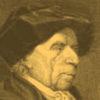 Wiedemann, Conrad (Konrad) Eberhard (1722–1804): Father of Christian Rudolf Wilhelm Wiedemann, from 1796 father-in-law of Luise Michaelis. Wiedemann was a merchant, tobacco-wares manufacturer, and art dealer in Braunschweig; married to Dorothea Frederike, née Raspe. (Portrait: Österreichische Nationalbibliothek; Bildarchiv Austria.)
Wiedemann, Conrad (Konrad) Eberhard (1722–1804): Father of Christian Rudolf Wilhelm Wiedemann, from 1796 father-in-law of Luise Michaelis. Wiedemann was a merchant, tobacco-wares manufacturer, and art dealer in Braunschweig; married to Dorothea Frederike, née Raspe. (Portrait: Österreichische Nationalbibliothek; Bildarchiv Austria.)
 Wiedemann, Dorothea Frederike, née Raspe (1741–1804): Wife of Conrad Eberhard Wiedemann in Braunschweig, mother of Christian Rudolf Wilhelm Wiedemann; daughter of an accountant in the Royal Mining Service, interested in the arts. (Portrait: Bildarchiv Foto Marburg.)
Wiedemann, Dorothea Frederike, née Raspe (1741–1804): Wife of Conrad Eberhard Wiedemann in Braunschweig, mother of Christian Rudolf Wilhelm Wiedemann; daughter of an accountant in the Royal Mining Service, interested in the arts. (Portrait: Bildarchiv Foto Marburg.)
Wiedemann, Eberhard: Brother of Christian Rudolf Wilhelm Wiedemann, Sophie Wiedemann, and Konradine Luise Hufeland, née Wiedemann; brother-in-law of Luise Wiedemann, née Michaelis, and Gottlieb Hufeland.
Wiedemann, Sophie (dates unknown): Sister of Christian Rudolf Wilhelm Wiedemann, Konradine Luise Hufeland, née Wiedemann, and Eberhard Wiedemann; sister-in-law of Luise, née Michaelis, and Gottlieb Hufeland.
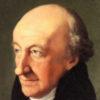 Wieland, Christoph Martin (1733–1813): Writer. Alongside Lessing, G. C. Lichtenberg, and Kant one of the most influential Enlightenment representatives in Germany, and with Herder, Schiller, and Goethe one of the four preeminent representatives of Weimar classicism. Considered one of the founders of the genre of the German Bildungsroman, a master of the verse narrative, a prolific literary critic, and a writer with a mellifluous style. Fell in love in 1750 with Sophie von Gutermann (later von La Roche), who he claimed turned him “into a poet” and to whom he became engaged. His initial works were largely influenced by Klopstock. His heroic poem, Hermann, attracted the attention of the writer J. J. Bodmer, who invited Wieland to Zürich and with whom he remained until 1754, working then till 1760 as a private house tutor in both Zürich and Bern and publishing largely sentimental, Pietistically inspired works, though also a tragedy, Lady Johanna Gray (1758), the first in German in blank verse. His engagement with Sophie von Gutermann ended during this period. He returned to Biberach and worked in the civil government, then became more rationalistically inclined, abandoning the earlier Pietistic language and also publishing lighter erotic poetry, moving toward the style for which he also later became known, that of light sensuousness, joie de vivre, and serene grace, all of which was quite contrary to his Pietistic youth. His first novel, Geschichte des Agathon (2 vols., 1766–77), which enjoyed considerable success, was an exemplary expression of Enlightenment thinking. In 1762 Wieland also began translating Shakespeare, completing over twenty plays and greatly influencing the theater in Germany. In 1772 Anna Amalia of Sachsen-Weimar engaged him as private tutor to her two sons. From 1773 published the periodical Der teutsche Merkur (acting as editor until 1789), thereafter one of the leading literary journals of the time. Although the publication of his collected works enabled him to purchase an estate in Ossmannstedt near Weimar, where he was visited by, among others, his former fiancée, Sophie von La Roche, and her daughter, Sophie Brentano, the death of his wife and the increasing financial burden prompted him to return to Weimar in 1803, where he remained until his death. (Portrait: 1805, by Ferdinand Carl Christian Jagemann; Weimarer Stadtschloss.)
Wieland, Christoph Martin (1733–1813): Writer. Alongside Lessing, G. C. Lichtenberg, and Kant one of the most influential Enlightenment representatives in Germany, and with Herder, Schiller, and Goethe one of the four preeminent representatives of Weimar classicism. Considered one of the founders of the genre of the German Bildungsroman, a master of the verse narrative, a prolific literary critic, and a writer with a mellifluous style. Fell in love in 1750 with Sophie von Gutermann (later von La Roche), who he claimed turned him “into a poet” and to whom he became engaged. His initial works were largely influenced by Klopstock. His heroic poem, Hermann, attracted the attention of the writer J. J. Bodmer, who invited Wieland to Zürich and with whom he remained until 1754, working then till 1760 as a private house tutor in both Zürich and Bern and publishing largely sentimental, Pietistically inspired works, though also a tragedy, Lady Johanna Gray (1758), the first in German in blank verse. His engagement with Sophie von Gutermann ended during this period. He returned to Biberach and worked in the civil government, then became more rationalistically inclined, abandoning the earlier Pietistic language and also publishing lighter erotic poetry, moving toward the style for which he also later became known, that of light sensuousness, joie de vivre, and serene grace, all of which was quite contrary to his Pietistic youth. His first novel, Geschichte des Agathon (2 vols., 1766–77), which enjoyed considerable success, was an exemplary expression of Enlightenment thinking. In 1762 Wieland also began translating Shakespeare, completing over twenty plays and greatly influencing the theater in Germany. In 1772 Anna Amalia of Sachsen-Weimar engaged him as private tutor to her two sons. From 1773 published the periodical Der teutsche Merkur (acting as editor until 1789), thereafter one of the leading literary journals of the time. Although the publication of his collected works enabled him to purchase an estate in Ossmannstedt near Weimar, where he was visited by, among others, his former fiancée, Sophie von La Roche, and her daughter, Sophie Brentano, the death of his wife and the increasing financial burden prompted him to return to Weimar in 1803, where he remained until his death. (Portrait: 1805, by Ferdinand Carl Christian Jagemann; Weimarer Stadtschloss.)
Wildt, Johann Christian Daniel (1770–20 April 1844): Mathematician, physicist, from 1796 to 1806 professor of philosophy in Göttingen. Allegedly a quite competent mathematician whose early career went well but whose arrogance prevented him from being appointed Georg Christoph Lichtenberg’s successor upon the latter’s death. August Wilhelm Rehberg, seeking to help Wildt out of his awkward career straits, appointed him to an administrative position at the mint in Hannover, though, there, too, Wildt’s exaggerated self-estimation prevented his advancement: Wildt compared himself with Isaac Newton and considered himself deserving of appointment to be the head of the entire mint; he was similarly indignant that his name was listed after his superiors in the annual state calender. This position, too, he lost in 1820, to the alleged delight of his colleagues.
Wilhelm, (Duke) in Bavaria (1752–1837): Count Palatinate and Duke of Gelnhausen, residing in Landshut. From 1799 bore the title Duke “in” Bavaria. Married to Maria Anna Countess Palatinate of Birkenfeld-Zweibrücken, sister of the then prince elector Maximilian Joseph, later king of Bavaria, the latter of whom gave him the Duchy of Berg in appanage to govern in 1803, after which Wilhelm resided in Düsseldorf. When Maximilian ceded the duchy to Napoleon in 1806 for Ansbach, Wilhelm moved to Bamberg.
Wilhelm I of Hesse-Kassel (1743–1821): from 1760 as Wilhelm IX Count von Hanau, from 1785 Landgrave of Hesse-Kassel, from 1803 as Wilhelm I electoral prince there.
 Wilhelm II of Hesse (1777–1847): From 1821 prince elector of Hesse. Son of Wilhelm I of Hesse-Kassel; studied in Marburg and Leipzig; in 1797 he married Princess Auguste (1780–1841), daughter of the Prussian king Friedrich Wilhelm II. Abdicated for all practical purposes (“withdrew”) in 1831 after the disquiet of the 1830 Revolution. From 8 July 1841 married to his former mistress, Emilie Ortlöpp (1791–1843). (Portrait: unknown artist.)
Wilhelm II of Hesse (1777–1847): From 1821 prince elector of Hesse. Son of Wilhelm I of Hesse-Kassel; studied in Marburg and Leipzig; in 1797 he married Princess Auguste (1780–1841), daughter of the Prussian king Friedrich Wilhelm II. Abdicated for all practical purposes (“withdrew”) in 1831 after the disquiet of the 1830 Revolution. From 8 July 1841 married to his former mistress, Emilie Ortlöpp (1791–1843). (Portrait: unknown artist.)
Wilhelmine Marie of Denmark and Norway, Princess (18 January 1808 in Kiel–1891): Youngest daughter of Frederick VI of Denmark and Marie Sophie of Hesse-Kassel; Luise Wiedemann’s husband, Christian Rudolf Wilhelm Wiedemann, attended her mother at her birth, the parents being in Kiel during the English bombardment of Copenhagen in 1807.
Willemer, Johann Jakob (1760–1838): Frankfurt banker and writer, 1800–1804 director of the national theater in Frankfurt.
Wilmans (Wilmanns), Friedrich (1764–1830): Publisher. From 1792 in Bremen, primarily for foreign commissions, then for German authors, including from 1800 a series of anthologies with copper engravings to which Goethe and Schiller contributed. In 1802 he moved his company to Frankfurt, also becoming acquainted with Wilhelm Schlegel, who contributed to the anthologies. Wilmanns met Friedrich Schlegel at the Leipzig book fair in 1802 and eventually published Friedrich’s periodical Europa (1803–5), and during this period also published Friedrich Hölderlin’s translations from Greek drama.
Windischmann, Anna Maria, née Pizzala (3 November 1779–1854): Daughter of a merchant in Mainz, from 1797 married to Carl Joseph Windischmann. Their children included Karolina (1797–1813), Wilhelmine († 1832), Katharina Margaretha Walburga (1803–4), Georg Karl Ignaz (1805–28), Anna Maria Franziska (1805–32), Karl Johann Josef (1807–39), and Friedrich (1811–56).
Windischmann, Anna Maria Franziska (31 July 1805–1832): Daughter of Karl Joseph and Anna Maria Windischmann, twin sister of Georg Karl Ignaz Windischmann. Later married to legation councilor Moritz Lieber.
 Windischmann, Carl Joseph Hieronymus (1775–1839): Physician, philosopher, anthropologist. After attending the Gymnasium in Mainz 1787–92, he began study of philosophy at the university there. The French occupation of Mainz that year prompted him to transfer to Würzburg, where he finished that study and began studying medicine and the natural sciences. After completing this studies in 1796, he spent a year in Vienna for further medical training, returning to Mainz in 1797 to set up his medical practice and lecture at the university, also marrying Anna Maria, née Pizzala (3 November 1779–1854) that same year. From 1801 (1802?) in Aschaffenburg as physician-in-waiting to Prince-Bishop Franz von Erthal, who had moved his residence there from Mainz after the Peace of Lunéville had assigned left Rhine territories to France. The university in Mainz had also been moved there, so Windischmann continued his philosophical studies and began lecturing in natural history and philosophy, being appointed professor of philosophy and history (with a special charge to lecture in the philosophy of nature) the next year by Erthal’s successor, Karl Theodor von Dalberg. From 1818 at the newly founded university in Bonn (where Wilhelm Schlegel also received an appointment) as Catholic professor of history and philosophy as well as professor of medicine. He later became involved in disputes concerning Catholic doctrine. His earlier writings are generally considered his most important, albeit often characterized as excessively inclined to mysticism and pantheism as a result of the influence of Platonism (whose Timaeus Windischmann translated in 1804 and dedicated to Schelling), Neoplatonism, eastern thought, and Schelling, and his attempts to harmonize such thought with Christianity. Published Friedrich Schlegel’s own later “Philosophical Lectures” in 1836–37. (Portrait: Wien, Österreichische Nationalbibliothek, Bildarchiv und Grafiksammlung, Porträtsammlung Signatur: PORT_00136490_01.)
Windischmann, Carl Joseph Hieronymus (1775–1839): Physician, philosopher, anthropologist. After attending the Gymnasium in Mainz 1787–92, he began study of philosophy at the university there. The French occupation of Mainz that year prompted him to transfer to Würzburg, where he finished that study and began studying medicine and the natural sciences. After completing this studies in 1796, he spent a year in Vienna for further medical training, returning to Mainz in 1797 to set up his medical practice and lecture at the university, also marrying Anna Maria, née Pizzala (3 November 1779–1854) that same year. From 1801 (1802?) in Aschaffenburg as physician-in-waiting to Prince-Bishop Franz von Erthal, who had moved his residence there from Mainz after the Peace of Lunéville had assigned left Rhine territories to France. The university in Mainz had also been moved there, so Windischmann continued his philosophical studies and began lecturing in natural history and philosophy, being appointed professor of philosophy and history (with a special charge to lecture in the philosophy of nature) the next year by Erthal’s successor, Karl Theodor von Dalberg. From 1818 at the newly founded university in Bonn (where Wilhelm Schlegel also received an appointment) as Catholic professor of history and philosophy as well as professor of medicine. He later became involved in disputes concerning Catholic doctrine. His earlier writings are generally considered his most important, albeit often characterized as excessively inclined to mysticism and pantheism as a result of the influence of Platonism (whose Timaeus Windischmann translated in 1804 and dedicated to Schelling), Neoplatonism, eastern thought, and Schelling, and his attempts to harmonize such thought with Christianity. Published Friedrich Schlegel’s own later “Philosophical Lectures” in 1836–37. (Portrait: Wien, Österreichische Nationalbibliothek, Bildarchiv und Grafiksammlung, Porträtsammlung Signatur: PORT_00136490_01.)
Windischmann, Georg Karl Ignaz (31 July 1805–1828): Son of Karl Joseph and Anna Maria Windischmann, twin brother of Anna Maria Franziska Windischmann.
 Winckelmann, Johann Joachim (1717–68): Art historian, antiquarian, archaeologist. An autodidact in the field of art history, he is nonetheless generally considered one of the founders of the scholarly disciplines of archaeology and art history. Exercised enormous influence on the understanding of antiquity and especially of ancient art in Germany in the eighteenth century(esp. Goethe and Schiller), e.g., with his well-known notion of its “edle Einfalt und stille Grösse,” its “noble simplicity and serene grandeur,” which he critically juxtaposed with the overladen and allegorical excesses of the Baroque and Rococo artistic sensibility. His best-known works include Gedanken über die Nachahmung der griechischen Werke in der Malerei und Bildhauerkunst (1755), Geschichte der Kunst des Altertums (1764), and Anmerkungen über die Baukunst der alten Tempel zu Girgenti in Sizilien (1762). He was also ultimately the initiator of the notion that ancient architecture was consistently white. (Portrait: early 1760s, by Anton Raphael Mengs.)
Winckelmann, Johann Joachim (1717–68): Art historian, antiquarian, archaeologist. An autodidact in the field of art history, he is nonetheless generally considered one of the founders of the scholarly disciplines of archaeology and art history. Exercised enormous influence on the understanding of antiquity and especially of ancient art in Germany in the eighteenth century(esp. Goethe and Schiller), e.g., with his well-known notion of its “edle Einfalt und stille Grösse,” its “noble simplicity and serene grandeur,” which he critically juxtaposed with the overladen and allegorical excesses of the Baroque and Rococo artistic sensibility. His best-known works include Gedanken über die Nachahmung der griechischen Werke in der Malerei und Bildhauerkunst (1755), Geschichte der Kunst des Altertums (1764), and Anmerkungen über die Baukunst der alten Tempel zu Girgenti in Sizilien (1762). He was also ultimately the initiator of the notion that ancient architecture was consistently white. (Portrait: early 1760s, by Anton Raphael Mengs.)
Winkelmann, Dietrich Wilhelm (dates unknown): Wholesale foodstuffs and spice merchant in Braunschweig, father of Stefan Winkelmann. From 1773 married to Marianne Luise, née Leisewitz (30 May 1753–1818), sister of the writer Johann Anton Leisewitz. Winkelmann was one of the inaugural members of the board of the Braunschweig Stiftung (June 1794).
Winkelmann, Konrad (Conrad) von (dates unknown): Canon of St. Martens in Worms, subject to the Prince Elector of Mainz (as the Prince Bishop) when the French entered Worms on 4 October 1792. Opposed Georg Wilhelm Böhmer’s (Caroline’s brother-in-law’s) attempt to set up a freedom tree in Worms but had to give in when the rest of the opposition left the meeting (though Winkelmann did not attend the planting). The second freedom tree was erected when Winkelmann was sworn in as mayor of Worms during the French occupation, though he neither decreed the event nor ordered anyone to participate. He did later advise his clerical colleagues to attend Jacobin Club meetings to prevent excesses and to win public trust. General Adam Philippe de Custine appointed Winkelmann provisional mayor on 19 November 1792 and on 21 November as permanent mayor without Winkelmann even knowing about it beforehand. Though he later asked to resign, he was nonetheless implicated as part of the French administration in Worms and suffered extended incarceration.
Winkelmann (“Wickelmann,” Winckelmann), Stefan (Stephan) August (1780–1806): Physician, professor. A native of Braunschweig, studied medicine in Helmstedt, though also in Jena in 1800 together with Clemens Brentano; eventually received his master in philosophy and doctorate in medicine; from 1802 lecturer in Göttingen, from 1803 professor at the Anatomical Surgical College in Braunschweig. Published Einleitung in die dynamische Physiologie (1803); Über das Studium der empirischen Physiologie zu Ankündigung seiner Vorlesungen von Mich[aelis] 1803 bis Ost[ern] 1804 (Braunschweig 1803); also pieces on the public medical care of the poor, anthropology, and mental illness.
Winthem, Johanna Wilhelmine, née Schwalb (7 November 1775–30 March 1801): Third daughter of August Gottfried and Dorothea Schwalb in Hamburg; from 7 November 1798 wife of Friedrich Wilhelm von Winthem (21 January 1770–21 April 1848), fourth and eldest son from the first marriage of Friedrich Gottlob Klopstock’s second wife, Johanna Elisabeth, née Dimpfel, widowed von Winthem. — Johanna Wilhelmine and Friedrich Wilhelm von Winthem had two sons, Wilhelm (22 August 1799–2 September 1847) (q.v.) and Ernst (16 March 1801–1857). According to Caroline’s letter to Wilhelm Schlegel on 14 April 1801 (letter 307), Johanna Wilhelmine died from complications of childbirth; such must have been Ernst’s birth on 16 March 1801. Hamburgische Münzen und Medaillen, ed. O. C. Gaedechens, part 1: Die Münzen und Medaillen seit dem Jahre 1753 (Hamburg 1850), 248, incorrectly dates her death to 30 May 1801, having presumably read März as Mai in a manuscript; see instead Briefe von und an Klopstock, ed. J. M. Lappenberg (Braunschweig 1867), 447.
Winthem, Friedrich Wilhelm von (22 August 1799–2 September 1847): Hamburg merchant and entomologist, eldest son of Johanna Wilhelmine Winthem, daughter-in-law of Friedrich Gottlob Klopstock’s second wife (see letter 307 concerning the death of his mother following complications from the birth of Winthem’s younger brother, Ernst). After Christian Rudolf Wilhelm Wiedemann’s death in 1840 (rather than before, as Luise Wiedemann recalls), Winthem purchased his entire insect collection, which in 1819 had filled some 53 boxes; in 1852, after von Winthem’s own death, that collection was purchased by what is today Vienna’s Museum of Natural History.
Wittelsbach, Otto VIII von (ca. before 1180–1209): From 1193 mentioned as the successor to his father as count palatine in Bavaria. At the wedding of the niece of King Philipp of Swabia, Beatrix, with Duke Otto VII of Andechs-Merania — performed by the bishop of Bamberg (brother of the groom) — Otto VIII sought an unannounced audience with Philipp while the latter was resting. After being admitted, Otto allegedly drew his sword, slit Philipp’s throat, and then fled. He was captured on 7 March 1209, tried, and executed; his head was then thrown into the Danube River and the rest of his corpse preserved for years afterward in a barrel until it was stolen and interred by monks from the Indersdorf Monastery. The motive for the murder is obscure, though it is thought to derive from Philipp’s having slighted Otto’s honor by withdrawing the betrothal of his daughter Kunigunde to Otto in favor of a different military and political alliance. The question is where exactly the murder took place.
 Wolf, Friedrich August (1759–1824): Classical philologist. From 1776 first student matriculated at a German university in classical philology and its initiator as an independent discipline. Did not get on well with Christian Gottlob Heyne, however, who excluded him from his lectures and vehemently disagreed with Wolf’s views on Homer; Wolf pursued his studies independently in the university library. His edition of Plato’s Symposium prompted his appointment in 1783 as professor of philology and pedagogy in Halle, where he remained until 1807. His best-known work, his Prolegomena ad Homerum (1808), which accompanied his edition of the Iliad (1794) and focused on the alleged oral (non-written) nature of the transmission of such works in early antiquity, exerted considerable influence with its assertion that the epic in fact originated in individual songs and that it derives from multiple authors, a view prompting polemic from Heyne, who accused Wolf of plagiarism. The French victories in 1806 ended his career in Halle. From 1807 he taught in Berlin. Health problems prompted a trip to southern France, where he died. (Portrait: by Ernst Ludwig Riepenhausen; Universitätsbibliothek Salzburg.)
Wolf, Friedrich August (1759–1824): Classical philologist. From 1776 first student matriculated at a German university in classical philology and its initiator as an independent discipline. Did not get on well with Christian Gottlob Heyne, however, who excluded him from his lectures and vehemently disagreed with Wolf’s views on Homer; Wolf pursued his studies independently in the university library. His edition of Plato’s Symposium prompted his appointment in 1783 as professor of philology and pedagogy in Halle, where he remained until 1807. His best-known work, his Prolegomena ad Homerum (1808), which accompanied his edition of the Iliad (1794) and focused on the alleged oral (non-written) nature of the transmission of such works in early antiquity, exerted considerable influence with its assertion that the epic in fact originated in individual songs and that it derives from multiple authors, a view prompting polemic from Heyne, who accused Wolf of plagiarism. The French victories in 1806 ended his career in Halle. From 1807 he taught in Berlin. Health problems prompted a trip to southern France, where he died. (Portrait: by Ernst Ludwig Riepenhausen; Universitätsbibliothek Salzburg.)
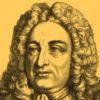 Wolff, Christian (1679–1754): From 1707 professor in Halle, leading philosopher in the early years of the Enlightenment, creating a rationalist system drawing on Aristotelian, Stoic, and scholastic thought while incorporating an altered form of Leibnizian thought. His students — Wolffians — eventually occupied positions at virtually every German university. Wolff was particularly effective as one of the first scholars to publish in German rather than Latin, thereby establishing a foundation for philosophical terminology in German. (Portrait: Zweihundert deutsche Männer in Bildnissen und Lebensbeschreibungen, ed. Ludwig Bechstein [Leipzig 1854], unpaginated [alphabetical] entry on Christian Freiherr von Wolf [sic].)
Wolff, Christian (1679–1754): From 1707 professor in Halle, leading philosopher in the early years of the Enlightenment, creating a rationalist system drawing on Aristotelian, Stoic, and scholastic thought while incorporating an altered form of Leibnizian thought. His students — Wolffians — eventually occupied positions at virtually every German university. Wolff was particularly effective as one of the first scholars to publish in German rather than Latin, thereby establishing a foundation for philosophical terminology in German. (Portrait: Zweihundert deutsche Männer in Bildnissen und Lebensbeschreibungen, ed. Ludwig Bechstein [Leipzig 1854], unpaginated [alphabetical] entry on Christian Freiherr von Wolf [sic].)
Wolff, Friedrich Karl (Carl) (Caroline spells it Wolf) (1766–1845): Scholar of antiquity, philologist. From Eutin, first studied theology and philology, from 1790 employed at various secondary schools (Gymnasium) in Eutin; from 1796 co-director in Glückstadt, from 1797 in Flensburg, from 1824 rector in Flensburg, retiring in 1841. His first scholarly task was to finish the translation of Plato’s Republic, 2 vols. (Altona 1799) begun by his friend E. Rudolf Boie in Eutin; he then extensively translated Cicero, acquiring a certain scholarly reputation for his work. Later also did a new metrical translation of Sophocles. Teacher of Georg Waitz, first editor of Caroline’s letters.
Wolfskeel, Christian Friedrich Carl von (1763–1844): Weimar official between 1787 and 1815. From 1789 administrative councilor, from 1794 court councilor and chamber official, from 1803 member of the High Consistory, from 1804 its director, from 1807 its chancellor, from 1815 senior chamber official.
Wolkenstein (von Wolkenstein-Trostburg), Count Anton Maria von (1760[?]–16 January 1808): From a family of Tyrolian nobility, Wolkenstein was the directing minister of state in Würzburg, also a royal Austrian, chamberlain, and a senior official with Ferdinand III, Grand Duke of Tuscany. From 5 November 1797 married to Countess Maria Anna, née Firmian (born 11 July 1777). Children were Leopold Johann Baptist (born 8 July 1800), Karl Friedrich Otto (born 10 September 1802), and Elisabeth (born 6 May 1805).
Wöllner, Johann Christoph (1732–1800): 1788–97 Prussian minister of justice and minister of spiritual affairs. Tried to stem the influence of the Enlightenment in Prussia through his restrictive religious edict of 1788.
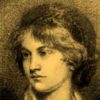 Wollstonecraft, Mary, married name from 1797 Godwin (1759–97): Author, mother of Mary Shelley. Known especially for her writings on the French Revolution and the piece Vindication of the Rights of Woman (1792). Friedrich Ludwig Wilhelm Meyer seems to have visited her in London in the autumn of 1789. (Portrait: frontispiece to Letters to Imlay, with Prefatory Memoir by C. Kegan Paul [London 1879].)
Wollstonecraft, Mary, married name from 1797 Godwin (1759–97): Author, mother of Mary Shelley. Known especially for her writings on the French Revolution and the piece Vindication of the Rights of Woman (1792). Friedrich Ludwig Wilhelm Meyer seems to have visited her in London in the autumn of 1789. (Portrait: frontispiece to Letters to Imlay, with Prefatory Memoir by C. Kegan Paul [London 1879].)
Woltmann, Karl Ludwig von (1770–1817): Historian, writer. From 1788 studied law, then exclusively history in Göttingen. From 1792 lectured on German history at the Gymnasium in Oldenburg, from 1793 back in Göttingen as a student, from 1795 professor in Jena, where he was an acquaintance of both Schiller and Goethe, also publishing in Schiller’s Die Horen and in Schiller’s Musenalmanach. Resigned the appointment in 1797 for health reasons and returned to Oldenburg, moving thence to Berlin, where in 1805 he began publishing the periodical Zeitschrift für Geschichte und Politik and working as a diplomatic representative in Berlin for various parties (Landgrave of Hesse-Homburg, Bremen, from 1804 Nürnberg, from 1805 Hamburg) while pursuing his historical studies. Ennobled in 1805, he subsequently married Karoline, née Stosch, who later became a popular writer. Loss of his diplomatic posts during the ensuing wars resulted in financial troubles, and he ultimately fled to Prague from Breslau to escape the advancing French army. His Geschichte des westphälischen Friedens (1808–9) was initially published as an unlikely continuation of Schiller’s Geschichte des dreissigjährigen Krieges. Also wrote a history of the Reformation in Germany (1800–1805). As a historian inclined more toward the historiographical style of Schiller and a literary-aesthetic treatment. Also published literary works, including a novel and poems.
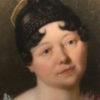 Wolzogen, Karoline (Caroline) von, née Lengefeld (1763–1847): Writer, sister of Charlotte von Schiller. Raised in Rudolstadt near Jena, where her father was hunting official at the court; at sixteen she married an administrative official, von Beulwitz, whom she divorced in 1794. She developed an early interest in contemporary literature along with her sister. During their marriage she became friends with Wilhelm von Humboldt’s later wife, Caroline von Dachröden. Through Wilhelm von Wolzogen, eldest son of Schiller’s earlier patroness, Henriette von Wolzogen, she became better acquainted with Schiller, having already met him earlier. A passionate attraction developed, but since she was already married, they could not marry. Schiller married her sister, Charlotte, in 1790. After her divorce she married Wilhelm von Wolzogen, moving then to Weimar with him in 1797 (Schiller and Charlotte were still residing in Jena at the time, moving to Weimar in 1799), where he was employed as a legation councilor and later (1803) privy councilor alongside Goethe. Thenceforth she participated intensively in cultural and social life in Weimar, their house becoming a gathering place for virtually all the representatives of contemporary Weimar culture at the time, including the duke and his wife and mother. Her best-known literary productions are Agnes von Lilien (1796/97), which appeared in Schiller’s Die Horen, and her biography of Schiller (1830). After Schiller died in 1805 and her husband in 1809, she began to withdraw from public life; after the death of her only son in 1825 in a hunting accident and of her sister in 1826, she withdrew entirely from social life in Weimar and lived almost reclusively in Jena until her death. (Portrait: 1808, by Carl von Steuben; Deutsches Literaturarchiv Marbach.)
Wolzogen, Karoline (Caroline) von, née Lengefeld (1763–1847): Writer, sister of Charlotte von Schiller. Raised in Rudolstadt near Jena, where her father was hunting official at the court; at sixteen she married an administrative official, von Beulwitz, whom she divorced in 1794. She developed an early interest in contemporary literature along with her sister. During their marriage she became friends with Wilhelm von Humboldt’s later wife, Caroline von Dachröden. Through Wilhelm von Wolzogen, eldest son of Schiller’s earlier patroness, Henriette von Wolzogen, she became better acquainted with Schiller, having already met him earlier. A passionate attraction developed, but since she was already married, they could not marry. Schiller married her sister, Charlotte, in 1790. After her divorce she married Wilhelm von Wolzogen, moving then to Weimar with him in 1797 (Schiller and Charlotte were still residing in Jena at the time, moving to Weimar in 1799), where he was employed as a legation councilor and later (1803) privy councilor alongside Goethe. Thenceforth she participated intensively in cultural and social life in Weimar, their house becoming a gathering place for virtually all the representatives of contemporary Weimar culture at the time, including the duke and his wife and mother. Her best-known literary productions are Agnes von Lilien (1796/97), which appeared in Schiller’s Die Horen, and her biography of Schiller (1830). After Schiller died in 1805 and her husband in 1809, she began to withdraw from public life; after the death of her only son in 1825 in a hunting accident and of her sister in 1826, she withdrew entirely from social life in Weimar and lived almost reclusively in Jena until her death. (Portrait: 1808, by Carl von Steuben; Deutsches Literaturarchiv Marbach.)
Wolzogen, Wilhelm von (1762–1809): Diplomat, husband of Karoline von Wolzogen. From 1775 pupil at the Stuttgart Karlschule, where he became acquainted with Schiller. From 1784 studied natural and political science and architecture before being commissioned with overseeing the ducal castles in Hohenheim. After a time studying architecture in Paris and working as a diplomatic representative for Württemberg, he returned in 1794, married Caroline von Wolzogen, and settled in Weimar in 1796 with a post at the court.
Wordsworth, William (1770–1850): English writer and poet, influenced by the French Revolution, preeminent representative of the English Romantic movement in literature, later an opponent of liberalism.
Wrede, Franz von (1762–1806): From 1783 a student in Göttingen, where he possibly was an admirer of Therese Heyne.
Wrisberg, Heinrich August (1739–1808): from 1770 full professor of medicine and member of the Society of Sciences in Göttingen, from 1785 with the title of Hofrath. One of Gottfried Philipp Michaelis’s professors. Lectured on physiology, midwifery, gynecology, anatomy (with dissection, whence Luise Wiedemann’s reference to Philipp sometimes arriving for lunch rather “pale”), as well as on the legal aspects of medicine.
Württemberg, Friedrich Wilhelm Karl von (1754–1816): Son of Duke Friedrich Eugen of Württemberg and nephew of Duke Karl Eugen of Württemberg. From 1797 Duke of Württemberg, from 1803 to 1806 Prince Elector, from 1806 till 1816, as Friedrich I, first king of Württemberg.
